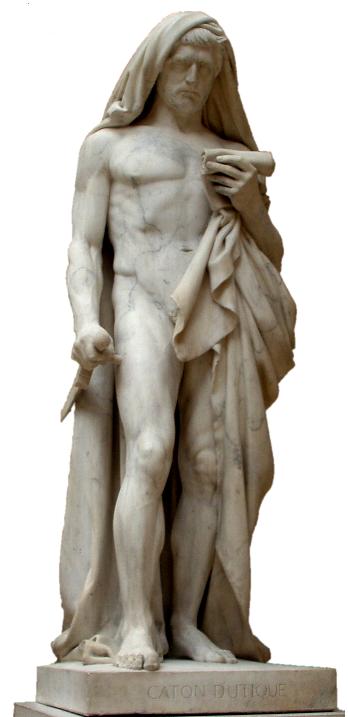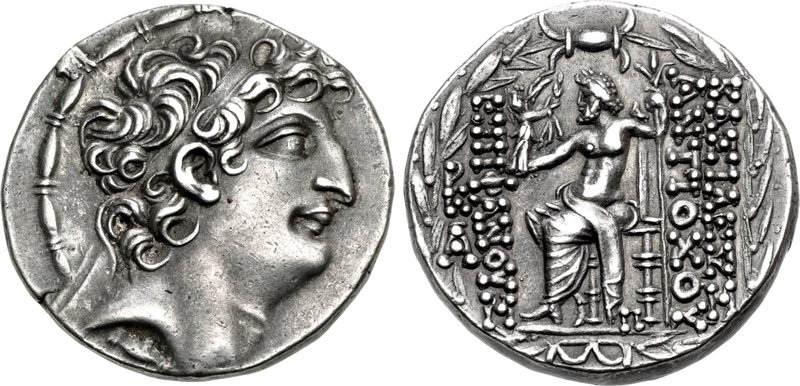|
95 BC
__NOTOC__ Year 95 BC was a year of the pre-Julian Roman calendar. At the time it was known as the Year of the Consulship of Crassus and Scaevola (or, less frequently, year 659 ''Ab urbe condita'') and the Second Year of Taishi. The denomination 95 BC for this year has been used since the early medieval period, when the Anno Domini calendar era became the prevalent method in Europe for naming years. Events By place Roman Republic * Consuls: Lucius Licinius Crassus and Quintus Mucius Scaevola Pontifex Seleucid kingdom * Philip I Philadelphus and Antiochus XI Ephiphanes succeed as co-rulers after the deposition of Seleucus VI Epiphanes. Ireland * "Forty metre structure" at Emain Macha (near modern Armagh, Northern Ireland) built and destroyed, presumably for ritual or ceremonial purposes. Asia Minor * Tigranes the Great becomes king of Armenia Births * Clodia, daughter of Appius Claudius Pulcher * Marcus Porcius Cato Uticensis Marcus Porcius Cato "Utice ... [...More Info...] [...Related Items...] OR: [Wikipedia] [Google] [Baidu] |
Roman Calendar
The Roman calendar was the calendar used by the Roman Kingdom and Roman Republic. The term often includes the Julian calendar established by the reforms of the Roman dictator, dictator Julius Caesar and Roman emperor, emperor Augustus in the late 1stcenturyBC and sometimes includes any system dated by inclusive counting towards months' kalends, nones (calendar), nones, and ides (calendar), ides in the Roman manner. The term usually excludes the Alexandrian calendar of Roman Egypt, which continued the unique months of that land's Egyptian calendar, former calendar; the Byzantine calendar of the Byzantine Empire, later Roman Empire, which usually dated the Roman months in the simple count of the ancient Greek calendars; and the Gregorian calendar, which refined the Julian system to bring it into still closer alignment with the tropical year. Roman dates were counted inclusively forward to the next of three principal days: the first of the month (the kalends), a day shortly befor ... [...More Info...] [...Related Items...] OR: [Wikipedia] [Google] [Baidu] |
Emain Macha
Navan Fort ( sga, Emain Macha ; ga, Eamhain Mhacha, label=Modern Irish ) is an ancient ceremonial monument near Armagh, Northern Ireland. According to tradition it was one of the great royal sites of pre-Christian Gaelic Ireland and the capital of the Ulaidh. It is a large circular hilltop enclosure—marked by a bank and ditch—inside which is a circular mound and the remains of a ring barrow. Archeological investigations show that there were once buildings on the site, including a huge roundhouse-like structure that has been likened to a temple. In a ritual act, this timber structure was filled with stones, deliberately burnt down and then covered with earth to create the mound which stands today. It is believed that Navan was a pagan ceremonial site and was regarded as a sacred space. It features prominently in Irish mythology, especially in the tales of the Ulster Cycle. According to the ''Oxford Dictionary of Celtic Mythology'', "the amhain Mhachaof myth and legend ... [...More Info...] [...Related Items...] OR: [Wikipedia] [Google] [Baidu] |
Cato Of Utica
Marcus Porcius Cato "Uticensis" ("of Utica"; ; 95 BC – April 46 BC), also known as Cato the Younger ( la, Cato Minor), was an influential conservative Roman senator during the late Republic. His conservative principles were focused on the preservation of what he saw as old Roman values in decline. A noted orator and a follower of Stoicism, his scrupulous honesty and professed respect for tradition gave him a powerful political following which he mobilised against powerful generals (including Julius Caesar and Pompey) of his day. Before Caesar's civil war, Cato served in a number of political offices. During his urban quaestorship in 63 BC, he was praised for his honesty and incorruptibility in running Rome's finances. He passed laws during his tribunate in 62 BC to expand the grain dole and force generals to give up their armies and commands before standing in elections. He also frustrated Pompey's ambitions by opposing a bill brought by Pompey's allies to transfer ... [...More Info...] [...Related Items...] OR: [Wikipedia] [Google] [Baidu] |
Appius Claudius Pulcher (consul 79 BC)
Appius Claudius Pulcher (c. 129 BC – 76 BC) was a Roman noble, general and politician of the 1st century BC. He was the father of a number of renowned Romans, most notable: the infamous Clodius and Clodia. Biography There is uncertainty about who his father was. It was most probably the Appius Claudius Pulcher who was consul in 143 BC. He was a supporter of Lucius Cornelius Sulla and served as praetor in 88 BC. He was exiled in that year by Gaius Marius while Sulla was away in the east. He returned to Rome after Lucius Cornelius Cinna died in 84 BC, and served as consul in 79 BC and as governor of Roman Macedonia from 78 BC to 76 BC. Family Appius Claudius Pulcher was likely married to a Caecilia Metella (a daughter of Balearicus), although this is not universally agreed upon, T. P. Wiseman believes that his wife was a Servilia Caepione (it is known that there was a Servilia around this time that was the wife of a Pulcher, but it is not known who either of them were). J ... [...More Info...] [...Related Items...] OR: [Wikipedia] [Google] [Baidu] |
Clodia (wife Of Metellus)
Clodia (born Claudia, c. 95 or 94 BC), nicknamed Quadrantaria ("Quarter", from ''quadrantarius'', the price of a visit to the public baths), Nola ("The Unwilling", from the verb ''nolo'', in sarcastic reference to her alleged wantonness), Medea Palatina ("Medea of the Palatine") by Cicero ( see below), and occasionally referred to in scholarship as Clodia MetelliMarilyn B. Skinner, "Clodia Metelli", ''Transactions of the American Philological Association'' 113 (1983), pp. 273–287, ("Metellus's Clodia"), was one of three known daughters of the ancient Roman patrician Appius Claudius Pulcher. Like many other women of the Roman elite, Clodia was very well educated in Greek and Philosophy, with a special talent for writing poetry.Wiseman, T. P.: "Catullus and His World: A Reappraisal".(1987) Her life, which was characterized by perpetual scandal, is immortalized in the writings of Marcus Tullius Cicero and, it is generally believed, in the poems of Gaius Valerius Catullus. Biog ... [...More Info...] [...Related Items...] OR: [Wikipedia] [Google] [Baidu] |
Armenia
Armenia (), , group=pron officially the Republic of Armenia,, is a landlocked country in the Armenian Highlands of Western Asia.The UNbr>classification of world regions places Armenia in Western Asia; the CIA World Factbook , , and ''Oxford Reference Online'' also place Armenia in Asia. It is a part of the Caucasus region; and is bordered by Turkey to the west, Georgia to the north, the Lachin corridor (under a Russian peacekeeping force) and Azerbaijan to the east, and Iran and the Azerbaijani exclave of Nakhchivan to the south. Yerevan is the capital, largest city and the financial center. Armenia is a unitary, multi-party, democratic nation-state with an ancient cultural heritage. The first Armenian state of Urartu was established in 860 BC, and by the 6th century BC it was replaced by the Satrapy of Armenia. The Kingdom of Armenia reached its height under Tigranes the Great in the 1st century BC and in the year 301 became the first state in the world to adopt ... [...More Info...] [...Related Items...] OR: [Wikipedia] [Google] [Baidu] |
Tigranes The Great
Tigranes II, more commonly known as Tigranes the Great ( hy, Տիգրան Մեծ, ''Tigran Mets''; grc, Τιγράνης ὁ Μέγας ''Tigránes ho Mégas''; la, Tigranes Magnus) (140 – 55 BC) was King of Armenia under whom the country became, for a short time, the strongest state to Rome's east. He was a member of the Artaxiad Royal House. Under his reign, the Armenian kingdom expanded beyond its traditional boundaries, allowing Tigranes to claim the title Great King, and involving Armenia in many battles against opponents such as the Parthian and Seleucid empires, and the Roman Republic. Early years In approximately 120 BC, the Parthian king Mithridates II () invaded Armenia and made its king Artavasdes I acknowledge Parthian suzerainty. Artavasdes I was forced to give the Parthians Tigranes, who was either his son or nephew, as a hostage. Tigranes lived in the Parthian court at Ctesiphon, where he was schooled in Parthian culture. Tigranes remained a ho ... [...More Info...] [...Related Items...] OR: [Wikipedia] [Google] [Baidu] |
Northern Ireland
Northern Ireland ( ga, Tuaisceart Éireann ; sco, label= Ulster-Scots, Norlin Airlann) is a part of the United Kingdom, situated in the north-east of the island of Ireland, that is variously described as a country, province or region. Northern Ireland shares an open border to the south and west with the Republic of Ireland. In 2021, its population was 1,903,100, making up about 27% of Ireland's population and about 3% of the UK's population. The Northern Ireland Assembly (colloquially referred to as Stormont after its location), established by the Northern Ireland Act 1998, holds responsibility for a range of devolved policy matters, while other areas are reserved for the UK Government. Northern Ireland cooperates with the Republic of Ireland in several areas. Northern Ireland was created in May 1921, when Ireland was partitioned by the Government of Ireland Act 1920, creating a devolved government for the six northeastern counties. As was intended, Northern Ireland ... [...More Info...] [...Related Items...] OR: [Wikipedia] [Google] [Baidu] |
Armagh
Armagh ( ; ga, Ard Mhacha, , "Macha's height") is the county town of County Armagh and a city in Northern Ireland, as well as a civil parish. It is the ecclesiastical capital of Ireland – the seat of the Archbishops of Armagh, the Primates of All Ireland for both the Roman Catholic Church and the Church of Ireland. In ancient times, nearby Navan Fort (''Eamhain Mhacha'') was a pagan ceremonial site and one of the great royal capitals of Gaelic Ireland. Today, Armagh is home to two cathedrals (both named after Saint Patrick) and the Armagh Observatory, and is known for its Georgian architecture. Although classed as a medium-sized town, Armagh was given city status in 1994 and Lord Mayoralty status in 2012, both by Queen Elizabeth II. It had a population of 14,777 people in the 2011 Census. History Foundation ''Eamhain Mhacha'' (or Navan Fort), at the western edge of Armagh, was an ancient pagan ritual or ceremonial site. According to Irish mythology it ... [...More Info...] [...Related Items...] OR: [Wikipedia] [Google] [Baidu] |
Seleucus VI Epiphanes
Seleucus VI Epiphanes Nicator ( grc, Σέλευκος Ἐπιφανής Νικάτωρ, translit=Séleukos Epiphanís Nikátor; between 124 and 109 BC – 94 BC) was a Hellenistic Seleucid monarch who ruled Syria between 96 and 94 BC. He was the son of Antiochus VIII and his Ptolemaic Egyptian wife Tryphaena. Seleucus VI lived during a period of civil war between his father and his uncle Antiochus IX, which ended in 96 BC when Antiochus VIII was assassinated. Antiochus IX then occupied the capital Antioch while Seleucus VI established his power-base in western Cilicia and himself prepared for war. In 95 BC, Antiochus IX marched against his nephew, but lost the battle and was killed. Seleucus VI became the master of the capital but had to share Syria with his brother Demetrius III, based in Damascus, and his cousin, Antiochus IX's son Antiochus X. According to the ancient historian Appian, Seleucus VI was a violent ruler. He taxed his dominions extensively to support his wars ... [...More Info...] [...Related Items...] OR: [Wikipedia] [Google] [Baidu] |
Ab Urbe Condita
''Ab urbe condita'' ( 'from the founding of the City'), or ''anno urbis conditae'' (; 'in the year since the city's founding'), abbreviated as AUC or AVC, expresses a date in years since 753 BC, the traditional founding of Rome. It is an expression used in antiquity and by classical historians to refer to a given year in Ancient Rome. In reference to the traditional year of the foundation of Rome, the year 1 BC would be written AUC 753, whereas AD 1 would be AUC 754. The foundation of the Roman Empire in 27 BC would be AUC 727. Usage of the term was more common during the Renaissance, when editors sometimes added AUC to Roman manuscripts they published, giving the false impression that the convention was commonly used in antiquity. In reality, the dominant method of identifying years in Roman times was to name the two consuls who held office that year. In late antiquity, regnal years were also in use, as in Roman Egypt during the Diocletian era after AD 293, and in the B ... [...More Info...] [...Related Items...] OR: [Wikipedia] [Google] [Baidu] |
Antiochus XI Ephiphanes
Antiochus XI Epiphanes Philadelphus ( gr, Ἀντίοχος Ἐπιφανής Φιλάδελφος; died 93 BC) was a Seleucid monarch who reigned as King of Syria between 94 and 93 BC, during the Hellenistic period. He was the son of AntiochusVIII and his wife Tryphaena. AntiochusXI's early life was a time of constant civil war between his father and his uncle AntiochusIX. The conflict ended with the assassination of AntiochusVIII, followed by the establishment of AntiochusIX in Antioch, the capital of Syria. AntiochusVIII's eldest son SeleucusVI, in control of western Cilicia, marched against his uncle and had him killed, taking Antioch for himself, only to be expelled from it and driven to his death in 94 BC by AntiochusIX's son AntiochusX. Following the murder of SeleucusVI, AntiochusXI declared himself king jointly with his twin brother PhilipI. Dubious ancient accounts, which may be contradicted by archaeological evidence, report that AntiochusXI's first act was to aven ... [...More Info...] [...Related Items...] OR: [Wikipedia] [Google] [Baidu] |







